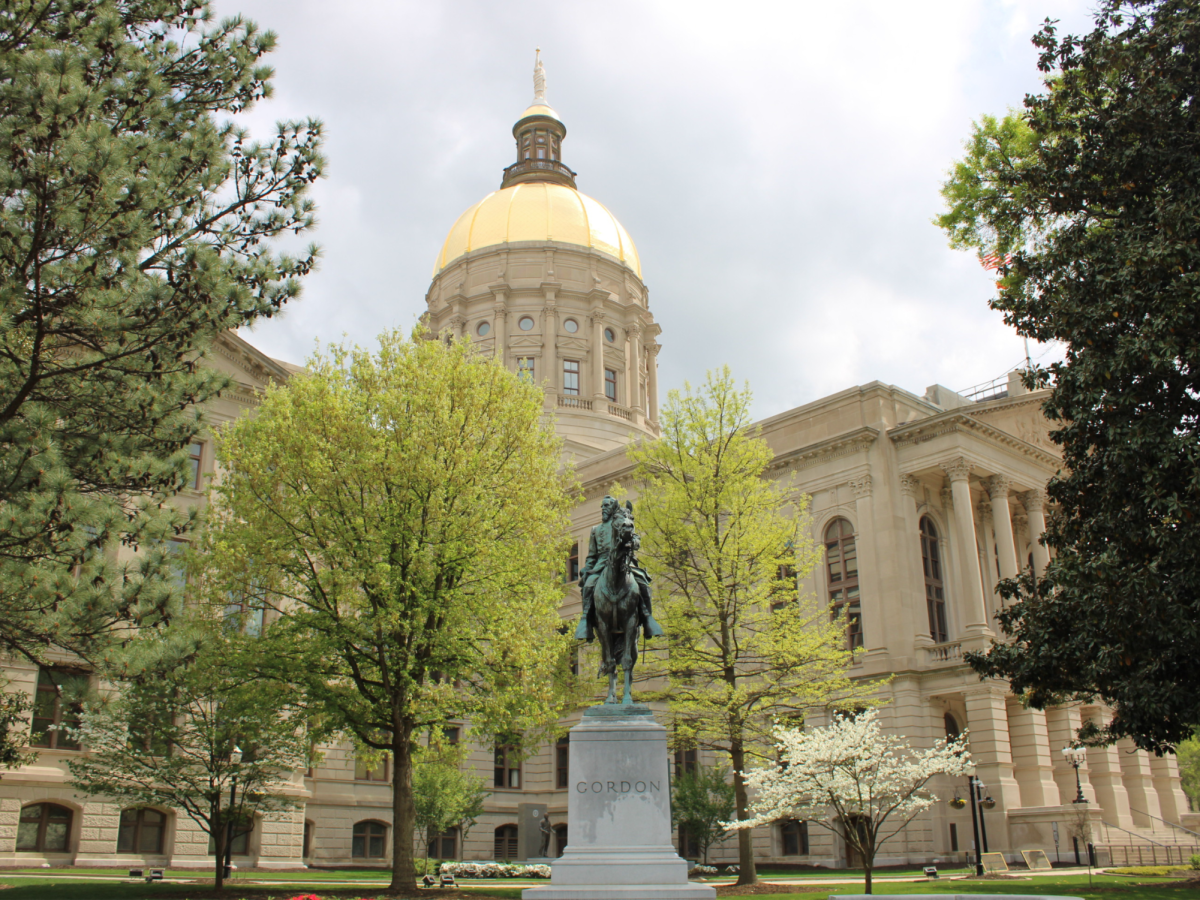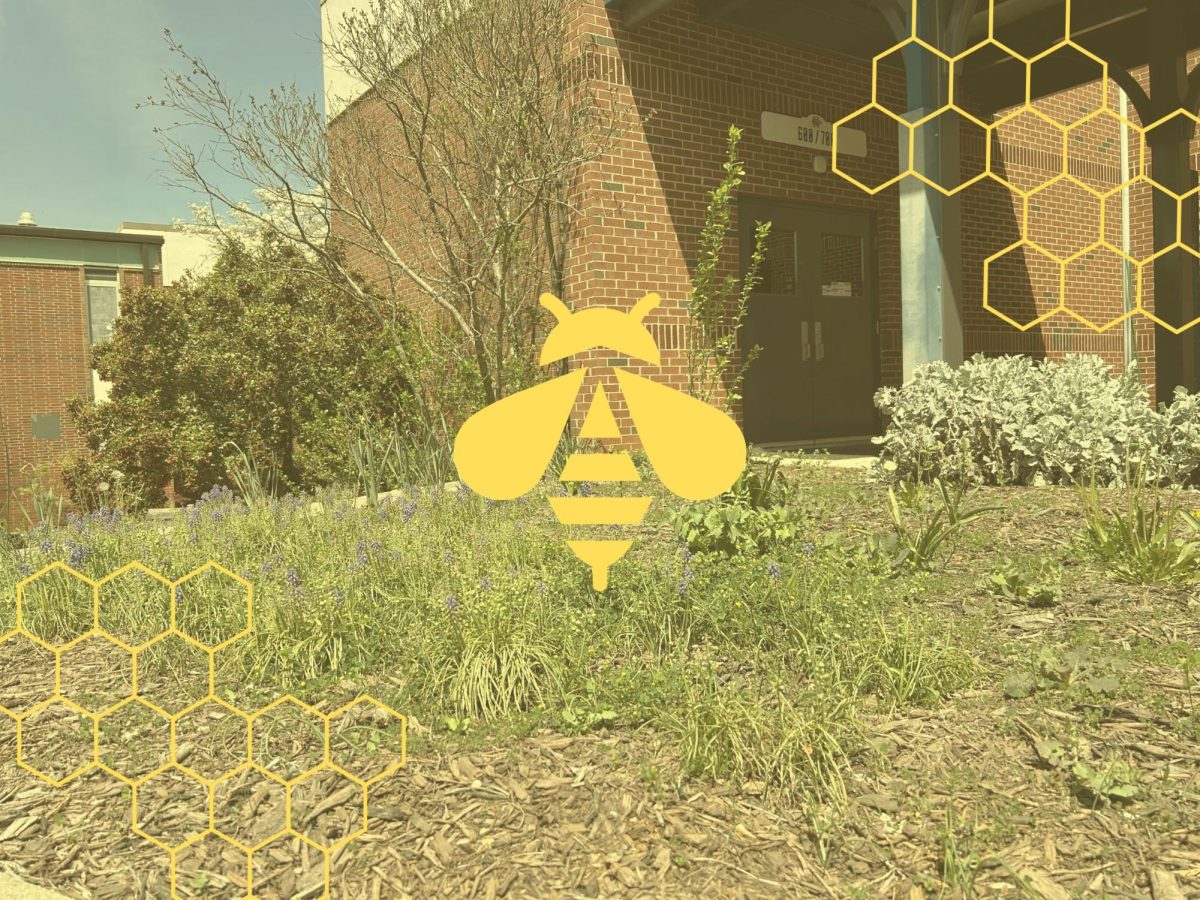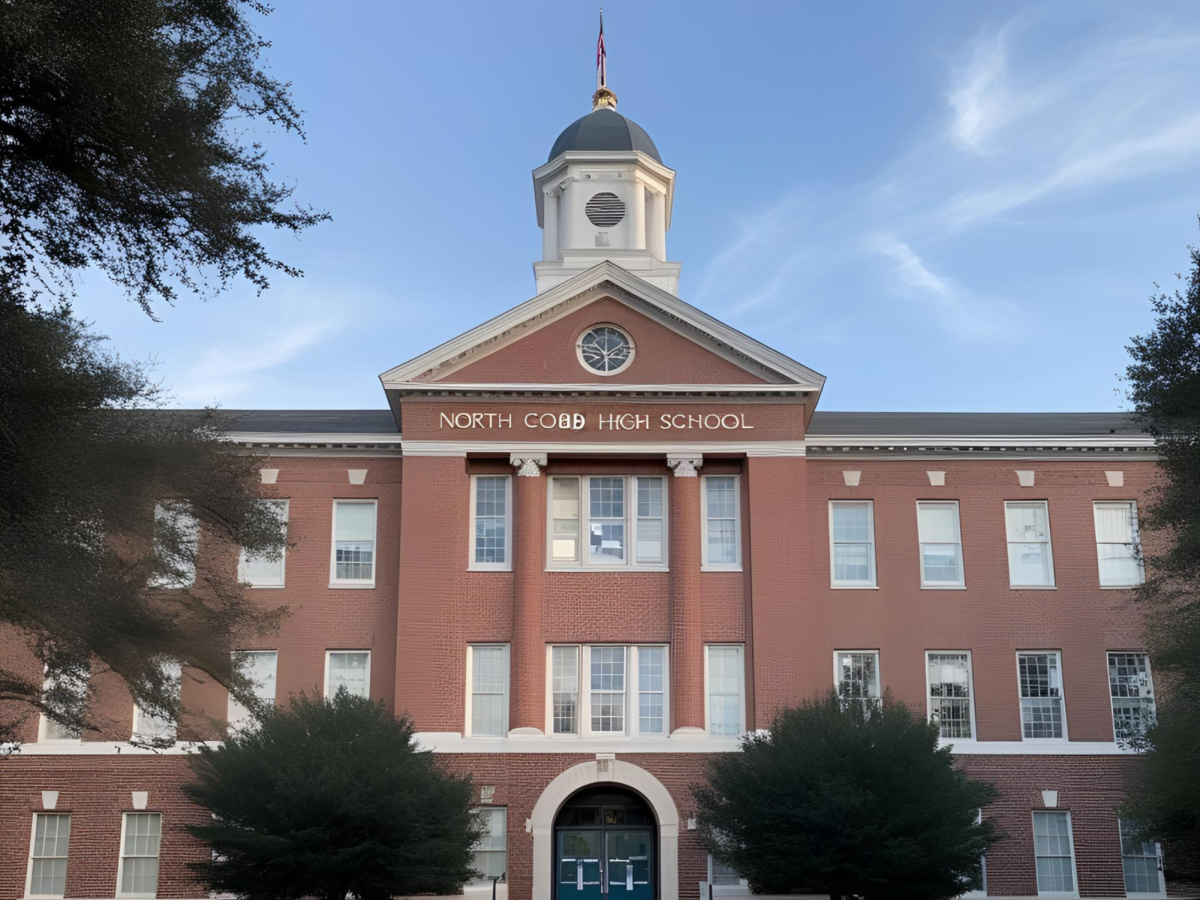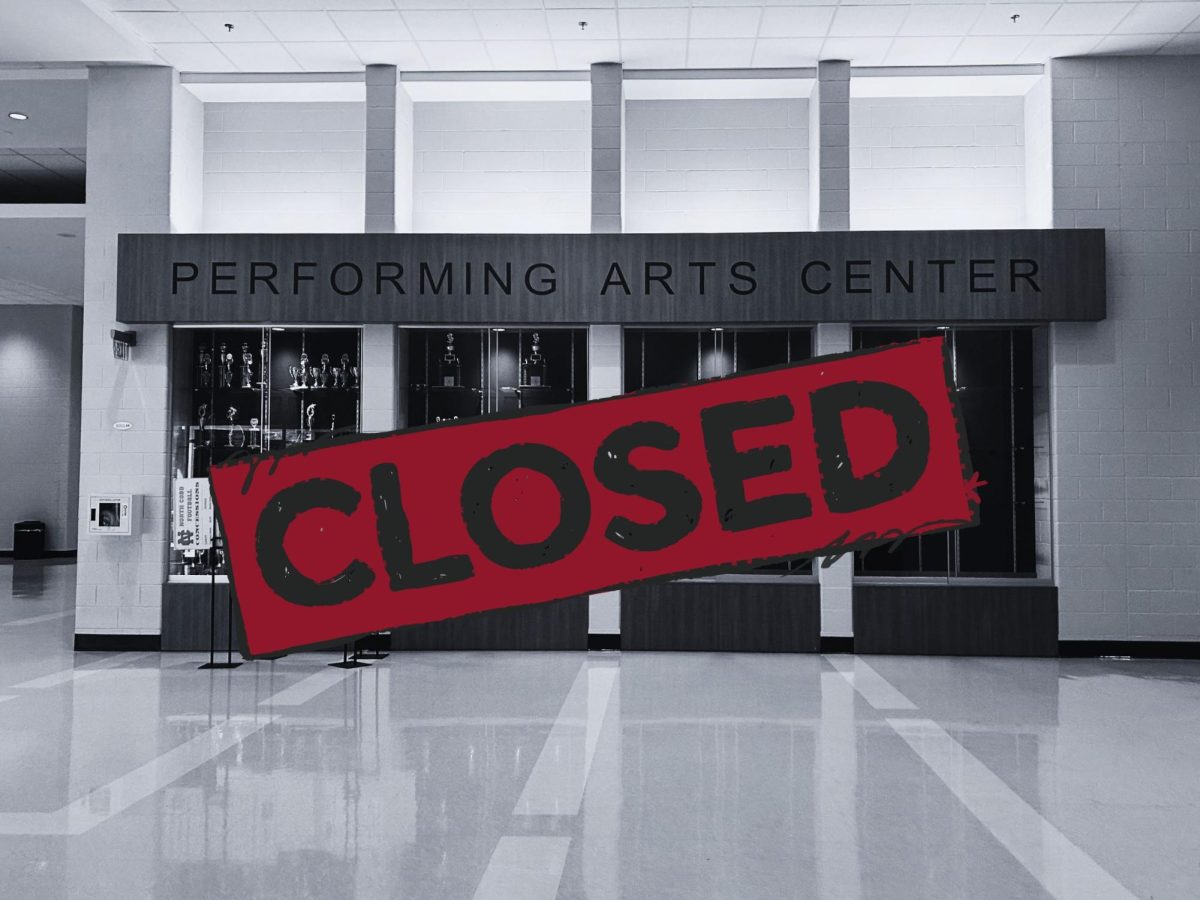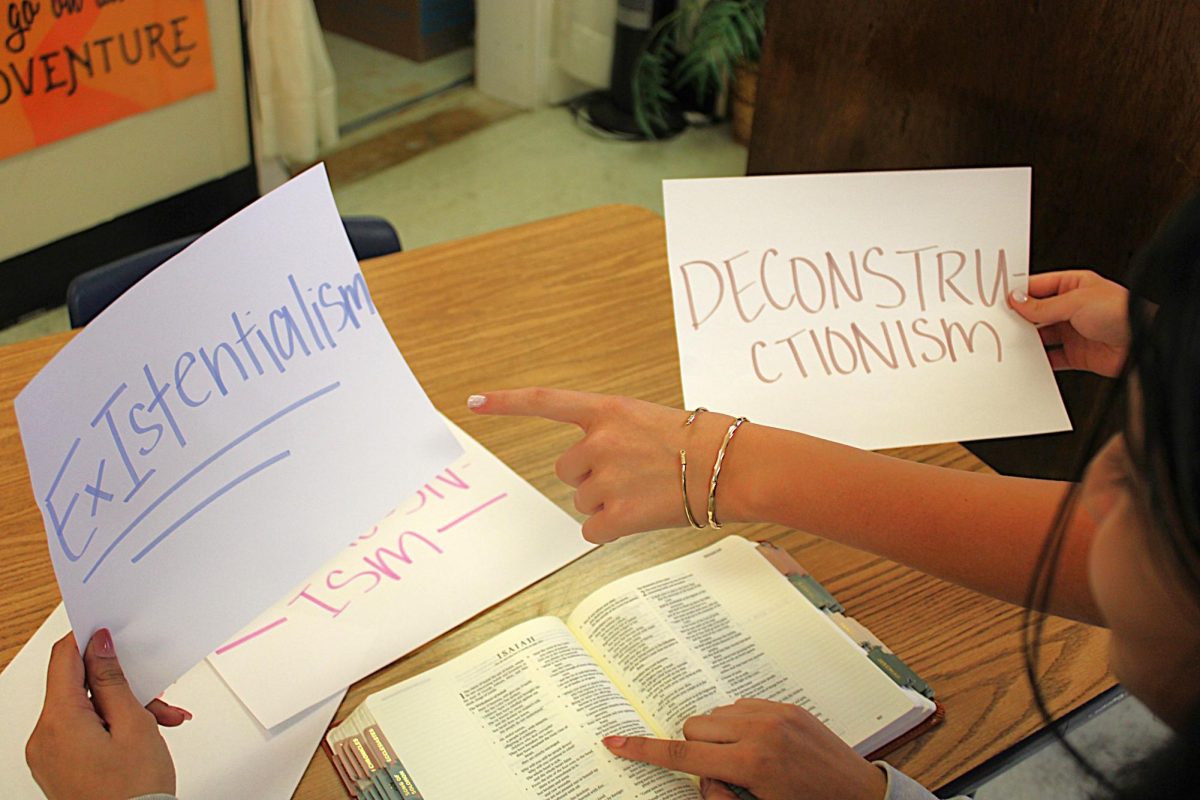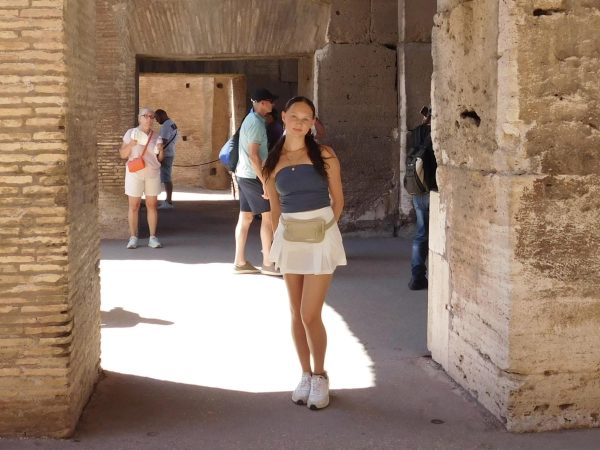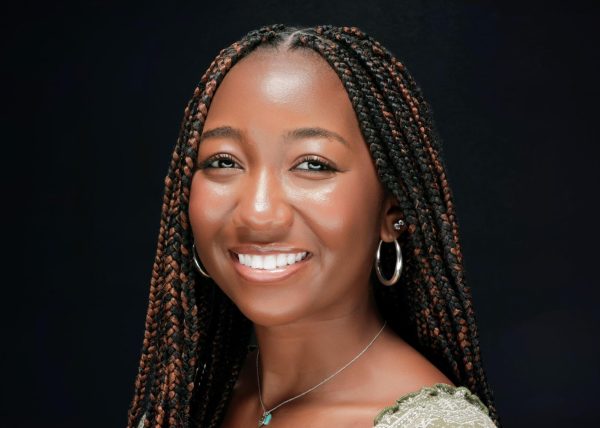Upon the end of the 40-day legislative session in the Georgia State Capitol April 4, Reporter Sophia Lamb and Editor in Chief Ciara Whimbush visited Atlanta to interview representatives, see what bills or legislations enter the floor and educate students on the ins and outs of state-level politics. Through a series of interviews, the two journalists sought to achieve one goal: enlightening their classmates on the importance of civic engagement. As conversions commence and votes occur, Lamb and Whimbush take the NC community within the hustle and bustle that murmurs in the Capitol.

As the two journalists arrived at the towering building, the sunlight shone off the golden dome. Walking through the grounds proved mesmerizing as the green grass glistened and the flowers danced in the wind. The grass, trimmed to perfection, complemented the abundance of walking paths available to citizens. Each path led to one of the statues of notable historical figures that surround the building.
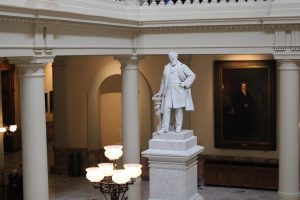
The statues outside of the capitol include: John Brown Gordon (D), Eugene Talmadge (D), Martin Luther King Jr., Jimmy Carter (D) and Thomas E. Watson (D). Each of these historical figures helped to advance the U.S. either socially, economically or politically, earning their place in the garden. With the majority of them facing toward the street, each of the statues held its special position outside the front of the building.
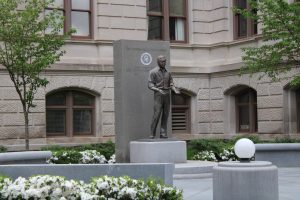
A statue dedicated to the late former President Carter, a champion for human rights, stands proudly on the State Capitol lawn. Carter, who created the illustrious Carter Center in 1982 alongside his wife Rosalynn, used his post-presidency platform to engage in peace efforts and disaster relief around the world. As the only president from the Peach State, Carter served as a beacon of light to several citizens, leaving a legacy that inspires every person to commit an act of kindness.
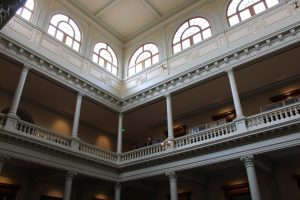
Completed in March 1889, the Georgia State Capitol reflects the architectural style of the Neo-Classical-Renaissance Revival, as described by the designers Willoughby J. Edbrooke and Franklin P. Burnham. Sporting high ceilings and brown wooden oak doors, the style represents the impeccable taste of the era. The tall columns and the intricate designs complement each other through tasteful colors, enhancing the impact on viewers.
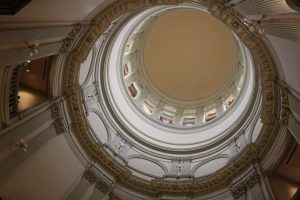
Containing the highest ceilings in the building, the depth of this room reaching 272 feet, mirrors the enormous responsibility of the people working near it. Inside this impressive chamber hang pictures of America’s predecessors, paying tribute to the inspirational figures. With the openings on each floor, visitors can see each picture in their full glory. With history hanging on the walls, the rotunda represents the most impressive sector of the capitol building.
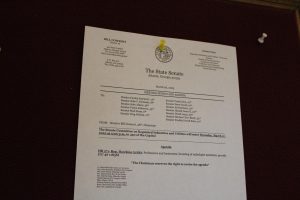
This image showcases the Senate agenda for April 2, released by the 46th Chairman, Bill Cowsert (R), to his fellow senators. On both halves of the Capitol buildings, agendas serve a crucial purpose, as they provide a clear guideline for topics of discussion for each busy day. Additionally, these agendas appear on the Capitol websites so that constituents can follow along with their lawmakers on debate.
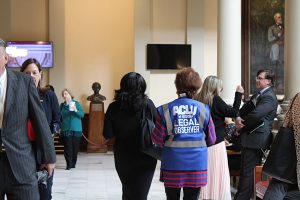
Throughout the day, various interest groups and lobbyists frequented the Georgia State Capitol to see what debate may occur about their unique issues. For example, this photo captures a legal observer from the American Civil Liberties Union (ACLU), an organization that advocates for the legal protection of marginalized groups. As a legal observer, this ACLU member can act as an extra set of eyes and ears in political settings to ensure that no rights of the people become violated.
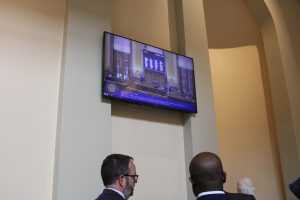
In this image, the Senate prepares to vote on Republican-backed House Bill (HB) 397. The bill aims to separate Georgia from the Electronic Registration Information Center (ERIC), which connects the state’s sensitive voter information. Without this system, a substantial amount of money would funnel into a new system that allows the seamless transfer of information between states. Although senators ultimately amended the bill, a substantial number of senators contemplated whether the bill would encourage positive change.
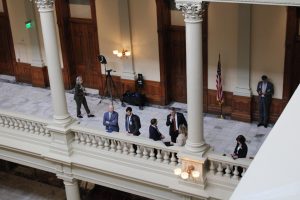
As sessions continue and votes occur, several individuals — lobbyists, journalists, aides or citizens — can essentially hang out around the chambers to catch a conversation with legislators. In the last days before Sine Die in the Georgia State Capitol, several people may own questions or concerns, which they hope to express before the end of these 40 days. The vast accessibility of Georgia lawmakers can significantly increase their personability and allow constituents to feel like their voice can be heard by elected officials.
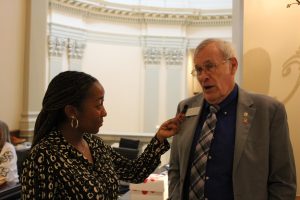
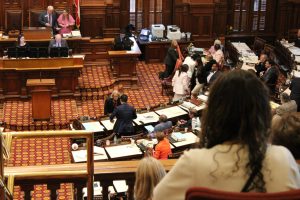
Although videography can not occur during an active session, a kind doorman allowed Lamb and Whimbush to capture a glimpse into the debate on camera. At that time, the discussion centered around Senate Resolution (SR) 8, a moderately partisan, Republican-backed bill focused on dedicating an intersection to the late Deputy Brandon Cummingham, who died in a Paulding County shooting. In a vote of 168 Yays, the resolution passed.
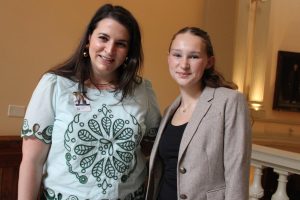
Throughout the day, Lamb and Whimbush conversed with colorful people who all gathered for diverse causes. Lamb acquired the opportunity to talk with a lobbyist, an individual who takes part in an organized attempt to influence legislators, and learn about what she represents. Leanna Brown, Vice President of the Metro Atlanta Chamber, represents businesses within the metropolitan Atlanta area by arguing for bills that create a pro-business climate.
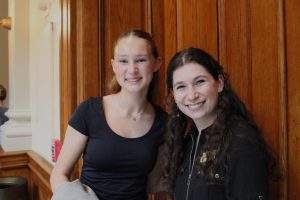
Rachel Schiffer, Chief of Staff for Representative Stacey Evans (D), conversed with Lamb and Whimbush about the current happenings of April 2. Shaffer spoke of hopefully achieving bipartisan agreements to reject or accept certain bills, showcasing her desire for togetherness and cooperation to help create a stronger Georgia. A specific focus that she spoke of pertained to granting fertility treatments to people if they have suffered through cancer treatments.
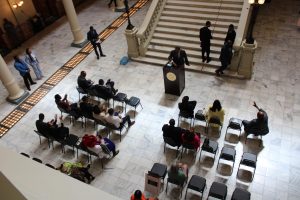
On the South Wing Steps, several people came together to host an Interfaith Prayer Day to commemorate victims of community violence. Preachers, citizens and legislators listened in on the testimonies provided by all speakers and received claps and hand raises of support. As Lamb and Whimbush watched overhead, they felt touched by the sense of unity present downstairs.
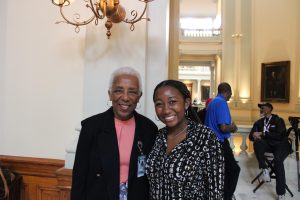
After interviewing Ryland McClendon, a contract lobbyist present on behalf of the Fulton County Commission, Lamb and Whimbush learned about the importance of setting a budget during the legislative session. McClendon, the first Black woman to ever lead the Metropolitan Atlanta Rapid Transit Authority (MARTA), provided significant insight to her thoughts heading into Sine Die. As sessions continued, McClendon hoped to hear debate about budget proposals for 2026.
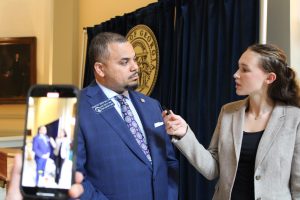
State Senator Derek Mallow (D) illustrated his power by exposing a misstep of the process pertaining to HB 397. As discussed earlier in the article, HB 397 aims to remove the ERIC from Georgia. He spoke of how a bill can only be amended 24 hours in advance, however, he only gained access to HB 397 an hour in advance, stripping him of the ability to propose changes within the writing. With this, he proposed that following the process constitutionally would eliminate this issue.

As Lamb and Whimbush’s time at the Capitol came to a close, they ran into Representative Lydia Glaize (D) to discuss different topics on the floor concerning education. Upon discussion, Glaize talked about the impacts of scholarships such as Zell Miller and Help Outstanding Pupils Educationally (HOPE), as well as Individualized Education Plans (IEPs) on students, and how legislators plan to help. As Georgia teens create their future plans for schooling, Glaize hopes that they feel comfortable pursuing their futures at home.
“One of the most important parts of college decisions was money for me. College is extremely expensive, and honestly, the Zelle Miller scholarship is one of the only things making it cheap enough for me to be able to afford college without taking out loans, and that’s honestly why I chose to go in-state. I really appreciate that they’re trying to make college more affordable and, therefore, more accessible! College is so important now, and it seems like all jobs either need a bachelor’s degree or to go to trade school, so I think that broadening access to college education is one of the best things we can do to help have a more educated and productive country,” magnet senior Rory Pulley said.
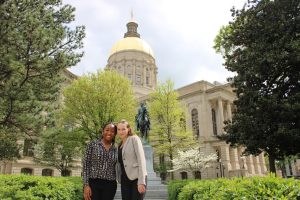
After hours spent wandering around and conversing with senators, representatives, lobbyists and others, Lamb and Whimbush ended their journey with a final tour of the grounds. Walking around the statues and admiring the history that is paired with them offered a perfect ending to an informative day. As they traveled home, the two discussed all that they had learned and what information would enhance their peers’ knowledge on the subject of state legislation.




